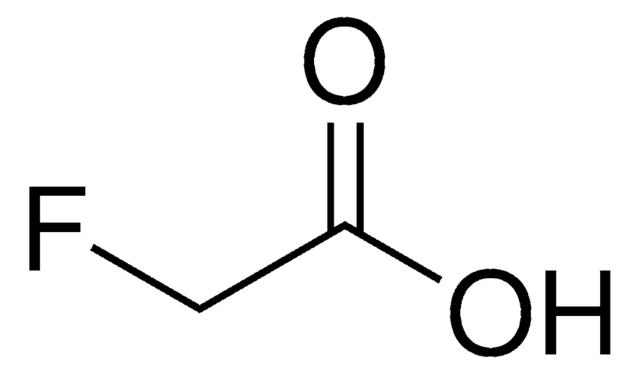SML1761
AA-CW236
≥98% (HPLC)
Synonym(s):
4-(2-(5-(Chloromethyl)-4-(4-(trifluoromethoxy)phenyl)-1H-1,2,3-triazol-1-yl)ethyl)-3,5-dimethylisoxazole
Sign Into View Organizational & Contract Pricing
All Photos(1)
About This Item
Empirical Formula (Hill Notation):
C17H16ClF3N4O2
CAS Number:
Molecular Weight:
400.78
UNSPSC Code:
12352200
NACRES:
NA.77
Recommended Products
Quality Level
Assay
≥98% (HPLC)
form
powder
color
white to beige
solubility
DMSO: 25 mg/mL protein, clear
storage temp.
2-8°C
SMILES string
CC1=C(CCN2N=NC(C3=CC=C(OC(F)(F)F)C=C3)=C2CCl)C(C)=NO1
Application
AA-CW236 has been used as an inhibitor of m6G DNA methyltransferase in mouse embryo fibroblasts.
Biochem/physiol Actions
AA-CW236 is a cell-permeable chloromethyl triazole (CMT) derivative that acts as a non-pseudosubstrate inhibitor against human O(6)-alkylguanine DNA methyltransferase (MGMT) by targeting MGMT active site Cys145 for covalent modification (KI = 24 nM, kinact = 0.03/min), displaying little affinity toward cysteines from other cellular proteins. AA-CW236 pretreatment (1 μM) effectively prevents MGMT from repairing DNA damage, causing significantly more upregulated O6-alkylguanine accumulation than the pseudosubstrate inhibitor Lomeguatrib (1 μM) when co-administered with the DNA-alkylating agent Temozolomide/TMZ (300 μM) in MCF-7 cells. Likewise, AA-CW236 is shown to boost TMZ toxicity in Caco-2 cultures (IC50 = 227 and 673 μM, respectively, with or without 3 μM AA-CW236 co-treatment).
Storage Class Code
11 - Combustible Solids
WGK
WGK 3
Flash Point(F)
Not applicable
Flash Point(C)
Not applicable
Certificates of Analysis (COA)
Search for Certificates of Analysis (COA) by entering the products Lot/Batch Number. Lot and Batch Numbers can be found on a product’s label following the words ‘Lot’ or ‘Batch’.
Already Own This Product?
Find documentation for the products that you have recently purchased in the Document Library.
Pennapa Thongararm et al.
Chemical research in toxicology, 33(2), 625-633 (2019-12-17)
DNA methylating agents are abundant in the environment and are sometimes used in cancer chemotherapy. They react with DNA to form methyl-DNA adducts and byproduct lesions that can be both toxic and mutagenic. Foremost among the mutagenic lesions is O6-methylguanine
Our team of scientists has experience in all areas of research including Life Science, Material Science, Chemical Synthesis, Chromatography, Analytical and many others.
Contact Technical Service








